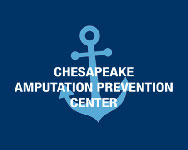Possible Treatment Options for Ankle Equinus
The first step in treating equinus is the identification of the reason for the equinus. If equinus is due to tightness of the calf and Achilles tendon, initial treatment focuses on decreasing the tightness of the calf and Achilles tendon. Conservative care includes wearing a heel lift and stretching the calf muscle. Shoes with a higher heel also are helpful. Patients with equinus should avoid going barefoot or wearing only socks.
Equinus is often a condition that is found in conjunction with other foot and ankle problems. Lengthening of the Achilles tendon or calf muscle is a common procedure performed in foot and ankle surgery. These procedures can be performed endoscopically. An endoscopic gastrocnemius recession lengthens one of the two muscles of the calf, correcting equinus. Two one-centimeter incisions are made, one on the medial and another on the lateral aspect of the calf. The obturator and cannula are passed between these two incisions.
An endoscopic gastrocnemius recession (EGR) is performed on an outpatient basis using a general anesthetic and thigh tourniquet. The procedure takes about 15 minutes to perform. Patients are able to walk on the same day of surgery. Follow-up care may include compression hose to address swelling and an anticoagulant as a prophylactic measure to prevent deep vein thrombosis (DVT).
Lengthening of the Achilles tendon can be performed percutaneously using a procedure called Achilles tendon lengthening or tendo-Achilles lengthening (TAL). This procedure is performed with three 0.5-centimeter stab incisions and often does not require suture closure. Post-operative care requires eight weeks in a hard, non-weight bearing cast and a walking cast for four weeks to follow.
Each of these procedures has its advantages and disadvantages. The advantage of the EGR is that it is an ambulatory procedure, meaning patients can walk on the same day of surgery. Also, the lengthening of the calf with an EGR is a very controlled lengthening. The disadvantage of the EGR is that it weakens the force of equinus by only five to ten percent. A TAL has a significantly greater impact on equinus. It can weaken the force of equinus up to 50 percent. The disadvantage is that a TAL is a non-ambulatory procedure and requires six weeks of non-weight-bearing casting.


.jpeg) Range of motion in the ankle is measured in the supine position (on your back) with knees extended. Force is applied to the forefoot, aimed at moving the toes and forefoot toward the knee.
Range of motion in the ankle is measured in the supine position (on your back) with knees extended. Force is applied to the forefoot, aimed at moving the toes and forefoot toward the knee.